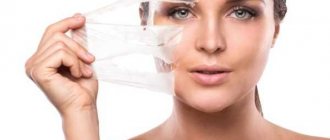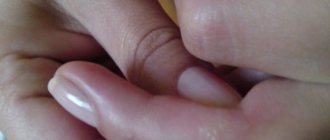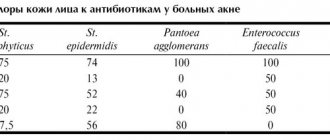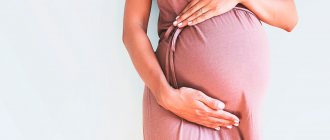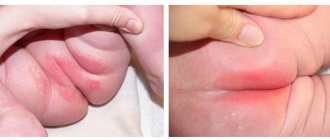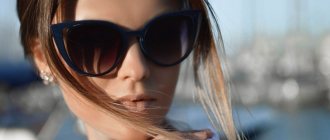Tanning is a protective reaction of the skin to the harmful effects of ultraviolet radiation.
UV rays are invisible to the human eye. They come in 3 types: UVA, UVB and UVC types. The latter do not reach the surface of the earth, so we will not consider them, but the first 2 types can penetrate the skin, causing burns and more serious long-term consequences.
Depending on the ability to tan, there are 6 skin phototypes:
I. Celtic - people with very fair skin and hair, blue eyes, sometimes with freckles on their faces. Short-term exposure to the sun usually results in burns.
II. Nordic - just like the first type, it is characterized by light skin color, darker hair - light brown or light brown, eyes: gray, green, or brown. The skin is practically resistant to tanning and quickly gets burned.
III. Dark European - differs from the previous type in a darker shade of skin, hair and eyes. People with this phototype already tan much better, but with prolonged exposure to the sun, they can still get a moderate burn.
IV. Mediterranean - skin color closer to dark, dark brown or black hair, mostly brown eyes. Tanning occurs quickly, burns rarely occur.
V. Indonesian - people with darker skin, hair and eyes are also dark. The tan lasts almost all year round.
VI. African American - characterized by a very dark shade of skin, eyes and hair. Such people never get burned because their skin contains a huge amount of melanin pigment.
Accordingly, types I and II are the most sensitive to the action of UV rays. Types III and IV are moderately sensitive.
Phototypes III and IV are more typical for Ukraine.
Sunburn is exactly the same tissue damage as a thermal burn, but its manifestations do not occur immediately, but more slowly, over several hours.
How and why do sunburn blisters occur?
The formation of large and small blisters on the skin from a sunburn indicates that the body has not coped with the load caused by exposure to sunlight. Their appearance is a normal reaction, due to which the body tries to protect the deep layers of the skin and internal organs from ultraviolet rays. In this regard, the cells of the epidermis begin to collapse: the surface layer of the skin rises slightly above the healthy areas, forming cavities-bubbles. A clear or yellowish liquid accumulates inside them.
Types of solariums
Currently, beauty salons and other similar establishments offer visitors three types of solariums:
- Horizontal - a classic option that involves insolation in a lying position. It is ideal for people who want not just to get a tan, but to take a break from endless worries and relax.
- Vertical - traditionally equipped with high-power lamps, allowing you to reduce session time without compromising the quality of tanning. You have to stand in such a solarium, but, as many clients note, this does not create discomfort. However, in order for the tan to apply evenly, you need to turn.
- Turbo solarium is equipped with a special air conditioning system that prevents burns and makes staying inside the capsule more comfortable. Solariums of this type may differ in the type of placement, but the result is always the same - a rich, uniform tan.
Choosing a solarium is a personal matter for everyone, but to determine the best one for yourself, it’s worth sunbathing in each one. You should also study the pros and cons of all options, and only then draw conclusions.
Benefits and harms
Assuring that tanning in a solarium is solely beneficial or harmful is wrong, although there is a lot of controversy surrounding this. In fact, this procedure has negative and positive sides, which we will discuss in more detail.
How to distinguish blisters, blisters after the sun from allergies?
Some people suffer from photodermatitis, an allergy to sunlight. This concept should not be confused with sunburn, since their symptoms, causes and mechanism of development are different.
Photodermatitis is the result of a malfunction of the immune system, while sun blisters on the shoulders, back, arms, face and other parts of the body appear when epidermal cells are destroyed by exposure to sunlight.
The signs of photodermatitis and sunburn are also different. An atypical reaction of the immune system manifests itself in the form of thickening of the skin, the formation of papules and weeping on it, increased skin pattern, severe itching and pigmentation disorders. And only in some cases, small bubbles filled with clear liquid may appear on the skin. As for blisters from sunburn, they are usually not accompanied by the appearance of symptoms characteristic of photodermatitis.
What is the benefit
We have been told since childhood that sunbathing is very beneficial. But if in the summer there are no problems with “bathing in the rays”, then in the autumn-spring period you cannot count on such a benefit. Therefore, people outside the season use a solarium, which is useful for several reasons:
- Promotes the synthesis of vitamin D. It strengthens tissues and has a beneficial effect on the general condition, so tanned people complain less about health problems.
- Helps fight depression and chronic fatigue. Tanning in a solarium during the cold season improves your mood, since during this procedure endorphins are produced - the “happiness hormone”. The latter is very important for the human nervous system.
- Improves the condition of skin suffering from acne and acne. But in this case, a solarium may be useless if the inflammation is caused by hormonal imbalance.
- Strengthens the immune system. Artificial ultraviolet light, like natural light, increases the body’s protective barrier, helping it more effectively resist colds and other diseases.
- Provides a more even and beautiful tan.
Signs of sunburn
The first sign of sunburn is redness of the skin caused by dilated capillaries. In this regard, plasma from small blood vessels seeps into the papillary layer of the epidermis, separating its upper (horny) layer and forming a bubble in the cavity of which plasma accumulates. The expansion of capillaries and leakage from plasma also causes the second frequent companion of sunburn - swelling of the skin.
In addition to the indicated hyperemia and swelling, blisters after sunburn are accompanied by the following symptoms:
- skin itching;
- painful sensations when touching burned areas of the skin;
- an increase in local temperature (if there are extensive burns, the general body temperature may also rise);
- weakness, muscle aches, dizziness, headache, nausea (these symptoms are present in the presence of severe sunburn).
Causes of bubbles
Sometimes people, after prolonged exposure to the sun, notice that blisters appear on their skin from tanning. Moreover, the reaction can be individual, even if the same people are on the beach. Therefore, not everyone understands what causes such changes.
The skin contains a special pigment for protection. It's called melanin. Due to its concentration, there is a barrier to the passage of ultraviolet rays into the tissue.
With prolonged exposure to the sun, the barrier is destroyed due to the weakening of the properties of melanin. The result is painful burns.
Blisters characterize severe sunburn.
Blisters occur in most cases in people with fair hair and skin. This is due to the fact that their integuments are equipped with less color pigment. Even with a short stay there is a risk of burns.
The main reason for the appearance of such negative consequences is the influence of the sun's rays. They can be of two types.
The first UVA rays are characterized by deep penetration into tissue. But along with tanning, after exposure to tanning, a person notices increased dryness of the skin, coarsening of the tissues, and wrinkling. They are also the reason why bubbles appear.
UVB rays are considered more dangerous. They can provoke not only negative changes, but also the growth of cancer cells.
Sunburn with blisters: what to do first?
If you notice redness on the skin and the appearance of blisters filled with liquid, the first thing you need to do is go to cover. In this case, it is advisable not just to move under an awning or umbrella, but to go into a cool room. If this is not possible, you can soak a beach towel or cotton clothing in water and cover the burned areas.
A cool shower will help reduce pain and reduce fever (the temperature should not be higher than 20 degrees). You need to make sure that the water jet is not too strong, as this may cause the blisters to burst.
A positive effect can be achieved by applying a cold (but not icy) compress to the affected areas. For example, this could be a bandage soaked in water.
There is a common belief that fresh burns should be lubricated with oil or greasy ointment. However, this cannot be done, since fat creates a thin film on the surface of water blisters from sunburn, blocking the access of oxygen and impairing heat transfer.
Another common misconception regarding first aid for burns is to treat the burned area with urine. This misconception can lead to infection of the affected area of the skin, since secondary urine contains toxic substances and may also contain pathogenic bacteria.
What is the harm?
While talking about the benefits of solarium, we cannot ignore its negative aspects, since ultraviolet rays are not as safe as many would like. The disadvantages of artificial tanning include:
- Partial destruction of the structure of the upper layers of the skin, which leads to dehydration and aging of cells.
- Hardening of the skin and clogged pores.
- Deterioration of hair condition.
- Risk of severe burns.
- Development of tumors (with frequent use of solariums).
- Exacerbation of some chronic diseases.
Important! If you follow the safety rules for using a solarium and do not abuse it, the listed disadvantages can be nullified. To avoid problems, it is recommended to consult with an experienced specialist.
Sunburns (blisters): how to treat?
After cooling the burns with a cool shower or compresses, you can proceed to further actions. How to treat sun blisters? If their area is large and there is pronounced pain, it is better to consult a specialist. The doctor will assess your condition and recommend the best way to deal with burns.
If burns are accompanied by severe pain, you can take a pain reliever. If your body temperature increases significantly, you may need to take antipyretic medications.
In the first few days after you receive a burn, using fat-based creams and ointments is prohibited. Instead, it is recommended to use hydrophilic-based products - light creams and gels that contain panthenol. For sunburn blisters, you can use La Cree Regenerating Cream for Sensitive Skin. It contains panthenol, bisabolol, avocado oil, natural extracts of string, walnut and violet. Their complex effect on the burned area of the skin helps to reduce redness and itching, regenerate the affected skin, moisturize and nourish it. In addition, the product has anti-inflammatory and soothing properties. The cream does not contain hormones and is approved for use for children from birth and pregnant women.
First aid
The first steps after discovering a sunburn are to cool and soothe the skin and relieve discomfort and itching.
As swelling and inflammation decrease, the goal of treatment becomes different: moisturizing and eliminating flaking of the skin, accelerating recovery. The simplest and most accessible measure of help at home is a bath with vinegar or a light shower with cool water and the application of cold compresses.
To reduce swelling in the event of damage to the limbs, you need to keep them in an elevated position while resting. You should adjust your diet by introducing foods rich in protein and vitamins to help the body recover as quickly as possible. To speed up metabolism, it is recommended to drink more fluid (up to 6 glasses per day).
Clinical researches
The conducted clinical study proves the high efficiency, safety and tolerability of products for daily skin care of children with mild and moderate forms of atopic dermatitis and during remission, accompanied by a decrease in the quality of life of patients. As a result of therapy, a decrease in the activity of the inflammatory process, a decrease in dryness, itching and flaking was noted.
The properties of the products are confirmed by a clinical study conducted jointly with the St. Petersburg Union of Pediatricians of Russia.
Prevention measures
To prevent blisters from forming on your skin, there are some preventive measures you need to take in mind.
- It is necessary to sunbathe during those hours when the sun is not so hot.
- When going outside, it is important to use sunscreen with a factor of at least 30. They should be applied to the face, neck, shoulders and arms, which are most susceptible to negative effects.
- In case of heavy sweating, the cream is renewed every two hours.
- You can cover your face with wide-brimmed hats and glasses. It is important to periodically stay in the shade.
- It is necessary to protect the skin of the lips by lubricating them with balm.
If a sunburn cannot be avoided, it is important to take steps to eliminate it as soon as possible. If there is no result, you should visit a doctor.
Fighting blisters after sunburn using traditional medicine
For minor burns, and after consulting a doctor, you can use some traditional medicine tips. How to apply sunburn if blisters appear? The following home remedies are suitable for this purpose:
- Aloe juice. Cut off the fleshy aloe leaf, rinse under running water and cut lengthwise, then lubricate the burned area of skin.
- Chamomile decoction. Pour a tablespoon of dried flowers into a glass of boiling water and leave until it cools completely. Lubricate blisters with a cotton pad soaked in the resulting infusion.
- Fresh cucumbers. Cut the cucumber into thin slices and apply to the sunburn blister. Remove after heating and replace with new cucumber slices.
You need to know that the folk remedies described above are not suitable for the treatment of serious skin lesions.
Rules for using a solarium
To get a luxurious, even tan, you must follow a number of rules and a certain sequence of steps:
- Preparation.
Skin is a very capricious organ of the human body. It requires special preparation before going to the solarium, which includes:
- thorough cleansing. In this case, it is not enough to rinse off in the shower, since the tan may peel off along with dead cells. Therefore, a couple of days before the session, you need to cleanse the skin with a delicate scrub and washcloth, and 2-3 hours before the session, wash under running water without gel or soap;
- hydration. Ultraviolet light is very drying to the skin, which many people do not take into account. To prevent dehydration and minimize other possible risks, it is recommended to use moisturizers. Don't forget about your lips and hair, which also need protection! In this case, use a balm and a mask with moisturizing ingredients;
- activation. In a solarium, tanning cream is essential. Today you can find special products designed for artificial tanning, but their choice should be approached very responsibly. Do not buy cheap creams with questionable composition, as they are not able to help the skin acquire a rich color and can harm its health;
- balanced diet. Oddly enough, healthy meals rich in vitamins are also important for a quality tan, since everything in our body is interconnected.
- Tanning process.
If you want to look gorgeous after the procedure, follow a few important steps:
- protect your eyes. Our eyelids are an unreliable barrier to artificial ultraviolet radiation. It easily penetrates through them and negatively affects the retina of the eyes. Therefore, you need not just close your eyes, but use special safety glasses that fit tightly to the skin;
- completely remove makeup. Your skin should be clean and ready for dosed radiation. Otherwise, you will erase your tan along with your makeup;
- cover your hair with a special cap. It will protect them from drying out, which can make even luxurious hair look like straw. If you often pamper yourself with a solarium, be sure to use masks to moisturize;
- save your perfume for another occasion. After taking a shower, before the procedure, do not apply perfume, deodorants, or eau de toilette to your skin.
- Care.
Even with the use of protective products, the skin is dried out by radiation, so moisturizing products will definitely come in handy. Care cosmetics with alpha-tocopherol, recommended for application immediately after tanning, deserve special attention. It will relieve irritation and neutralize the damage caused by free radicals.
FAQ: answers to common questions
As a rule, many people have questions about solariums, since they have not only supporters, but also opponents. We will look at the most common of them and give comprehensive answers.
How long can you stay in the solarium?
The duration of irradiation for each person is determined individually. In this case, experts take into account the skin phototype, the power of the lamps, their number, etc. But on average, the procedure is limited to 5–10 minutes.
What is the optimal frequency of visiting a solarium?
It is important to understand that the described procedure is unsafe and if it is abused, harm to health will be guaranteed. Therefore, you cannot sunbathe in a capsule more than once a day! In addition, it is not recommended to indulge yourself in artificial and natural ultraviolet light on the same day.
How many times a week are you allowed to soak in the solarium?
To ensure a luxurious tan and consolidate the result, it is enough to complete the full course. If we talk about weekly frequency, then a couple of days will be enough to achieve the goal. Of course, we must not forget about the characteristics of our skin. If you see that it is drying out too much, becoming rough and acquiring an unnatural color, reduce the number of trips to the solarium to the minimum possible.
Is it dangerous to sunbathe in a capsule every other day?
In theory, yes, but it’s better to play it safe by taking a pause of 3 days.
Is it possible not to use protective cream?
No and no again! Otherwise, you will dry out your skin and will not be able to get a long-lasting, beautiful tan.
Which cream to choose?
Today, special products are sold that protect the skin during artificial tanning. Base oils are not included in their list! When choosing creams, be sure to take into account your phototype and other skin characteristics to avoid unwanted consequences.
Is it possible to sunbathe without underwear (naked)?
No! The underwear protects the delicate skin of the intimate areas from burns and protects it from germs (the capsule may be dirty).
Is it allowed to take a phone into the booth?
There is no strict prohibition on this, but it is better to leave the mobile device in your bag. In a solarium you should relax, focus your attention on tanning, and not on games or texting with friends.
How quickly does a tan appear?
It all depends on the individual characteristics of the skin: for some people it acquires a rich color after an hour, and for others it takes 8 or more hours. And the phototype of sunbathers plays a key role in this.
How long does artificial tan last?
Usually the result pleases men and women within 3 weeks, but with proper care this period can be extended.
Should you shave before your session?
Even the most gentle hair removal leads to skin irritation, so it is better to remove hair a couple of days before the procedure.
How many sessions are required for a quality tan?
Usually 3-4 sessions are enough to obtain a lasting and clearly visible result. But to achieve maximum effect, it is recommended to complete the entire course.
Is it possible to take a bath after the procedure?
Yes, after a pause of 2–3 hours. In this case, it is advisable to fill the bathtub with warm, not hot water. Scrubs and other similar products cannot be used!
How many days later should I go to the solarium if peeling is done?
If there is no irritation or wounds, you can go sunbathing after 3-4 days.
Is it possible to sunbathe without taking off your lenses?
Allowed, but not recommended. It’s better to take your lens container and remove them before entering the booth.
Is it acceptable not to use glasses?
No! Without them, you risk damaging the retina of the eye, since the eyelids do not protect from ultraviolet radiation.
Is it possible to open your eyes in the capsule?
Only if absolutely necessary.
Is it possible to exercise after a solarium?
Yes, there are no contraindications for this. But, if you managed to relax while tanning and your body still wants to enjoy peace, it is better to reschedule the workout.
Is it possible to combine natural and artificial tanning?
No. Excess ultraviolet radiation will negatively affect the condition of the skin, regardless of its preparation and protection.
Is it possible not to use stikini?
They are an important protective attribute, so they are very necessary when tanning.
What if there is no stickini?
If it happens that you don’t have stickini, replace them with special lipstick.
Is solarium suitable for people with fair skin?
Unfortunately, fair skin is very capricious and can become burnt if you stay in the booth for more than 3 minutes. But in general, tanning in a salon is not contraindicated for her, as some people believe.
What happens if you go sunbathing with a fever?
Nothing, but such a symptom does not appear out of the blue and signals that the body is fighting some kind of disease. Therefore, you should not give it additional load in the form of artificial ultraviolet radiation.
Are there any age restrictions for tanning in a solarium?
The procedure is contraindicated for children under 16 years of age, as their skin is still vulnerable. Many experts even believe that only adults are allowed to tan in a solarium.
Can tattoos be damaged by tanning?
Yes, if they are not protected with thick stickers. Tattoos become discolored under artificial rays, but stickers offered in beauty salons can prevent this.
Can pregnant women go to a solarium?
The hormonal levels of pregnant women are very unstable, so solarium is contraindicated for them.
Are pathologies and solarium compatible?
No one will give a definite answer to this question. If you have various pathologies, you must contact your doctor, since only he can approve or prohibit artificial tanning.
What is important to observe when tanning for the first time?
If you are visiting a solarium for the first time, then:
- do not stay in the booth for more than 3 minutes;
- be sure to use a special cream;
- extend the tanning time gradually according to the recommendation of a specialist;
- Consult your doctor before the procedure and do not forget about contraindications.
Using the solarium correctly
What could be so difficult about artificial tanning when salons today have all the conditions for this? This is true, but in order not to be disappointed, use the instructions below:
- Choose the salon and the solarium itself taking into account your preferences.
- Before sunbathing, carefully inspect the capsule. If it is dirty or shows signs of long-term use, find another establishment.
- Ask all your questions to the experts. By the way, they should familiarize you with safety precautions and control buttons in the booth.
- Wear safety glasses (provided by salon staff).
- Lie down in the capsule or go into it (if placed vertically), close the lid/door.
- After tanning, leave the cabin, and after 2-3 hours take a shower.
A solarium has long ceased to be a luxury, so its use will not require large financial expenditures. And today there are plenty of establishments where you can use such a service. If you want to get a beautiful tan quickly and without health risks, feel free to trust modern technologies! The main thing is to follow the recommendations of doctors and specialists, and then you will not have to deal with problems caused by artificial tanning.
How long does it take for sun blisters to go away?
The skin recovery time depends on a number of factors: the area of the affected areas, general health, the presence of concomitant diseases, and compliance with medical recommendations. To speed up the regeneration of the skin, it is recommended to maintain a drinking regime and eat right. During the recovery period, it is recommended to consume foods rich in protein, since it is the building material for skin cells.
Sources:
- V.V. Chebotarev, N.V. Chebotareva, M.S. Askhakov, E.V. Bronnikova, Sensitive skin: causes, methods of therapy, journal Medical Bulletin of the North Caucasus, 2015
- I.I. Ryumina, V.V. Zubkov, Newborn skin care, Healthy Child magazine, 2017
- N.L. Rybkina, Modern approaches to newborn skin care: pediatrician tactics, journal Bulletin of Modern Clinical Medicine, 2014
When is it necessary to see a doctor?
If a person’s back is burned, you can cope with the consequences yourself. But sometimes a doctor's help is needed immediately.
Drug treatment under the supervision of a specialist is required if symptoms of heat stroke or dehydration appear. Such violations can be identified by the appearance of:
- dizziness;
- state close to fainting;
- increased heart rate;
- difficulty breathing, its intermittency;
- sunken eyes;
- extreme thirst and lack of desire to go to the toilet;
- pale skin, its coldness;
- nausea and chills, fever;
- photophobia, lacrimation.
Small and large painful blisters throughout the body should also alert you. In this case, you cannot do without medical help.
If the skin damage is not severe, you can cope with the consequences of unsuccessful tanning on your own without the help of doctors
What to do if blisters appear on the skin after sunbathing?
In case of radiation injuries, the victim is provided with emergency care. Untimely treatment is fraught with deepening of burns, increasing their area, deterioration of health - nausea, confusion, fainting, etc.
At the first symptoms of radiation injury, you must:
- Cool burned skin. To reduce the temperature in injured areas, apply cold compresses. This will reduce the heat and prevent further destruction of the epidermal cells.
- Treat lesions. To prevent blisters, apply several slices of cucumber to the burned areas. If vesicles still appear after a sunburn, they are wiped with antiseptic agents - Furacilin, Chlorhexidine, boric acid solution, etc. Then anti-burn agents are applied - Panthenol spray, Pantoderm gel,
- Zinc ointment, D-Panthenol cream, etc. Give painkillers. To quickly soothe burned skin, topical and oral analgesics are used. If the integrity of the integument is not compromised, the burns are treated with Acriol Pro, Ketoprofen. Non-steroidal anti-inflammatory drugs - Ibuklin, Ketanov, Naproxen - are suitable for oral administration.
What can't you do? ⛔
If blisters appear on the wound surface after a sunburn, it is strictly forbidden to perform the following actions:
- Use ice for cooling;
- Treat with oil until the damaged area is completely cooled;
- Puncture sunburn blisters yourself, without first consulting a specialist.
- If the burn is serious, with blisters, then under no circumstances should you puncture or open them - this can cause infection, and then you will have to resort to more serious treatment.
- When taking a shower, you should not use scrubs to speed up the exfoliation of the upper layer of the epidermis.
- There is no need to itch or scratch the damaged skin so as not to increase irritation.
